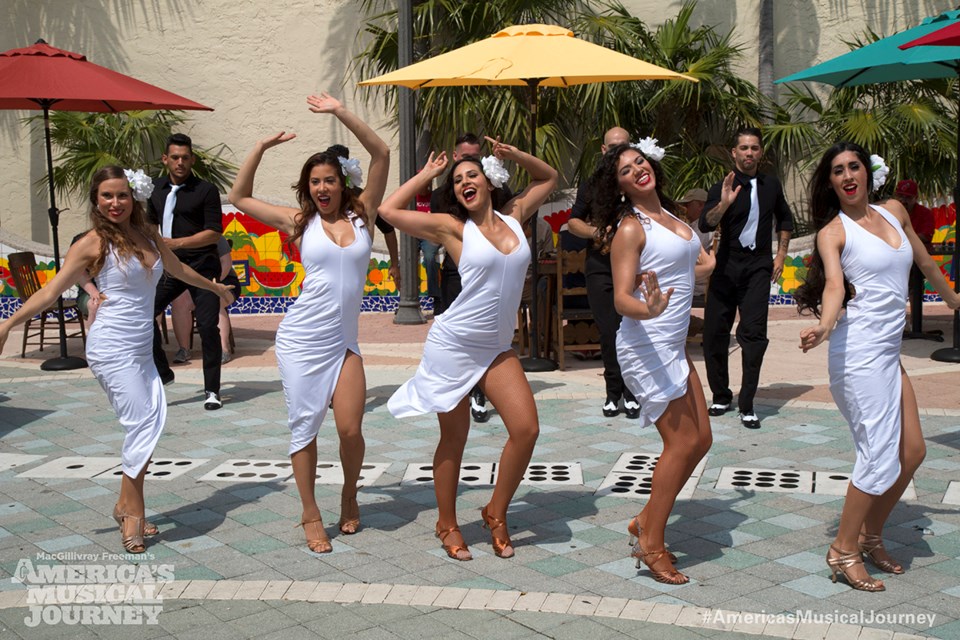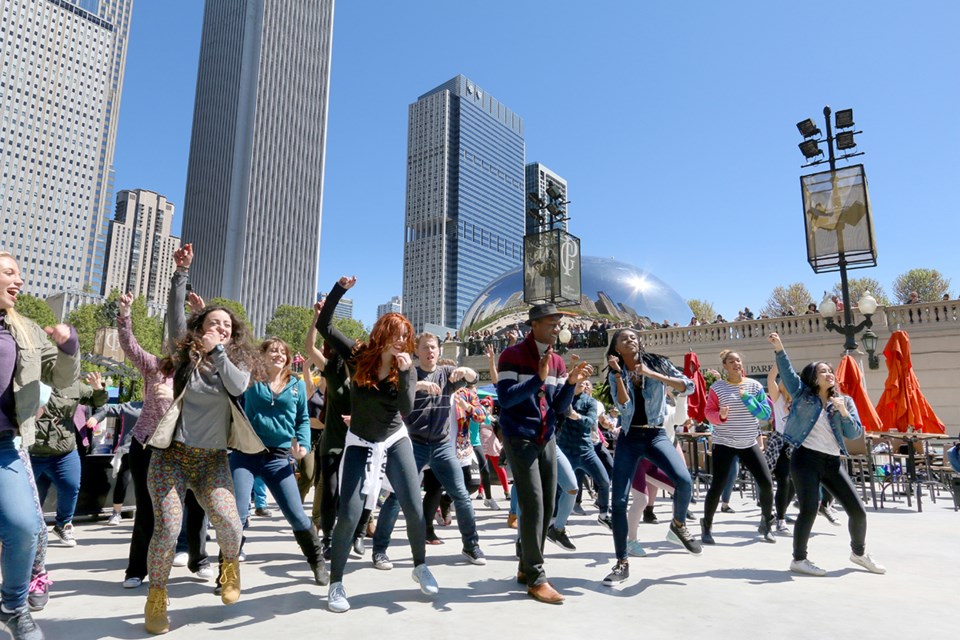One gets the sense that the director of America’s Musical Journey did not intend the irony of the last two scenes in the 44-minute film that’s now being screened at Science World’s Omnimax Theatre.
As this feel-good portrait of American music prepares to hit its last notes, there’s a glorious aerial scene of the Statue of Liberty, a proud and boastful symbol of a country that has not only welcomed immigrants, but prospered because of them.
That scene fades into a concert by Grammy-nominated singer/songwriter Aloe Blacc. The journey in the film’s title is his. The film follows him as he travels across the United States in search of the music that encapsulates not only America’s history but also the way the country’s geography shaped and bended the music in ways not possible anywhere else.
Blacc is the California-born son of Panamanian immigrants. The closing shot before the credits is of him performing live in front of the Capitol building in Washington, D.C.
Washington, right now, is consumed by tweets about walls that keep people out and legislation that sends young dreamers packing. In this political environment, the Statue of Liberty is nothing but a kitschy tourist attraction.
But let’s say the film’s director and sponsors did understand the irony of juxtaposing these two opposing narratives of America. Because that is truly what's great about the country’s musical heritage and why we must celebrate it. Jazz, the blues, country and western, rock and roll, hip hop — none of these musical genres would have been created were it not for the people who came to this place from distant lands, whether it was the slaves from Africa or Gloria Estevan from Cuba.

This music has endured for decades. It has broken colour and culture barriers in the past and, it’s hoped, will continue to bring people together long into the future.
“A single note can inspire dreams,” narrator Morgan Freeman intones at the beginning of the film that opened in a special premiere at Science World on Monday night. “Each person brought a different note… and when all these notes collided they exploded with creative energy.”
Explode they do in Science World’s Omnimax Theatre. Imagine watching the “Ken Burns effect” come to life on historical photos that are projected onto a screen that’s 27 metres wide and offers an almost 360-degree perspective. Archival photos become as close to three-dimensional as you can get without special glasses; sometimes, they even seem to move as if they were filmed.
Then add stunning video footage that soars high above city skyscrapers and swoops down on prairie fields and sun-drenched beaches. The movie is often a visual delight.

However, as much as the film is ostensibly about Blacc’s journey — you’ll recognize his song “Wake Me Up” in the flashmob scene shot in Chicago — there’s no escaping the influence of two of its sponsors. Brand USA, whose job it is to get people to visit America, and Expedia, whose job it is to make it easier to book your trip, make the film’s intentions pretty clear. Although Blacc gives some higher purpose to the narrative, essentially it’s a 44-minute travelogue (which is why any irony about the final scenes was probably unintentional). The cities of New York, New Orleans, Chicago, Miami and Laguna Beach get as much star treatment as the music that thrives there.
But that doesn’t make it a bad film. Some of the shots and visual effects are breathtaking, and it’s delightful to watch the dance scenes that illustrate how people continue to propel the music in new directions. Blacc is an amiable and engaging host, and you sense his authentic love of the music (and the children he wants to share it with).
If you loved all 19 hours of Ken Burns’ PBS series on jazz, this probably isn’t the film for you. However, if you want to spark your children’s interest in the music so that they will one day want to watch Burns’ fascinating ode to one of America’s greatest legacies, head to Science World. America’s Musical Journey screens at 12 and 2 p.m. on weekdays with an additional screening at 4 p.m.on weekends and holidays. It’s suitable for children six and older. The cost is $5 per person and it runs until May 18.


